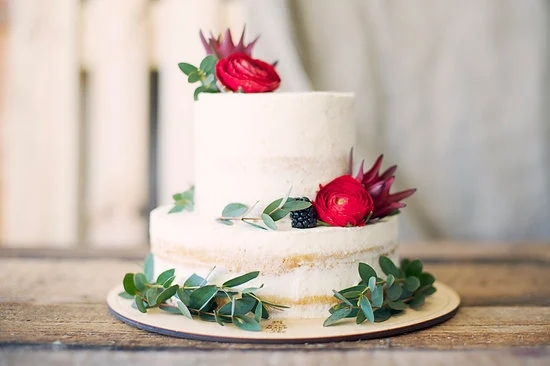Silicone cake decorating molds have revolutionized the way individuals can express their creativity in the kitchen. In this article, we will guide you on how to use silicone cake decorating molds effectively to elevate your baking game. These versatile tools are not only easy to use but also offer a wide range of benefits that traditional metal pans may lack.
One of the key advantages of using silicone cake decorating molds is their flexibility, which allows for easy removal of baked goods without the risk of sticking or tearing. Additionally, these molds are non-stick, making them a breeze to clean and maintain. Their ability to withstand high temperatures makes them ideal for both baking and freezing applications.
When it comes to choosing the right silicone cake decorating molds for your needs, consider the size and shape you desire for your cakes or other confections. With a variety of designs available in the market, from basic shapes to intricate patterns, you can unleash your artistic side and create stunning desserts effortlessly. Stay tuned as we delve into the specifics of preparing, filling, baking, removing, decorating, cleaning, and troubleshooting with silicone cake decorating molds in the following sections.
Understanding the Benefits of Using Silicone Cake Decorating Molds
When it comes to cake decorating, using silicone molds can be a game-changer for both beginner and experienced bakers. These molds offer a wide range of benefits that can help elevate your cake decorating skills to the next level.
Flexible and Easy to Use
One of the biggest advantages of silicone cake decorating molds is their flexibility. This makes it easy to remove the cakes from the mold without causing any damage. Additionally, silicone molds are non-stick, which means you don’t have to worry about your cakes getting stuck in the mold.
Durable and Long-Lasting
Silicone cake decorating molds are known for their durability and long-lasting properties. Unlike traditional metal or glass molds, silicone molds are generally more resistant to wear and tear. This means you can use them repeatedly without worrying about them losing their shape or effectiveness.
Versatile Designs
Another major benefit of using silicone cake decorating molds is the wide range of designs available. From intricate patterns to unique shapes, silicone molds allow you to create visually stunning cakes with ease. Whether you’re looking to make flower-shaped cupcakes or geometric fondant decorations, there’s a silicone mold out there for every creative idea.
Choosing the Right Silicone Cake Decorating Molds for Your Needs
When it comes to choosing the right silicone cake decorating molds for your baking needs, there are a few key factors to consider. First and foremost, you’ll want to think about the size and shape of the molds. Silicone cake decorating molds come in a variety of shapes and sizes, from intricate designs to simple geometric shapes. Consider what type of cakes or desserts you plan on making with these molds and choose accordingly.
Material Quality
Another important factor to consider when selecting silicone cake decorating molds is the quality of the material. Look for molds that are made from 100% food-grade silicone, as this ensures that they are safe to use with food and will not leach any harmful chemicals into your creations. Additionally, opt for molds that are BPA-free and FDA-approved for added peace of mind.
Design Features
Pay attention to the design features of the silicone cake decorating molds you’re considering. Some molds have additional features like non-stick surfaces or reinforced edges for easy handling. Others may have intricate details that can help elevate your cakes and desserts to a whole new level. Think about how you plan on using the molds and choose ones that have design features that align with your baking goals.
By taking these factors into consideration, you can select the right silicone cake decorating molds for your specific needs. Whether you’re looking to create elaborate designs or simple shapes, there’s a mold out there that can help bring your baking creations to life in style. Stay tuned to learn more about how to use these molds effectively for impressive results in your kitchen.
Preparing Your Silicone Cake Decorating Molds for First Use
When it comes to using silicone cake decorating molds, one of the most crucial steps is properly preparing them for their first use. This step ensures that your cakes come out perfectly shaped and avoids any potential issues during the baking process. Here’s a guide on how to prepare your silicone cake decorating molds for their debut:
Before using your silicone cake decorating molds for the first time, it is essential to wash them thoroughly with warm soapy water. This helps remove any manufacturing residues or dust that may have accumulated on the molds. Make sure to dry them completely before proceeding to the next step.
Once your silicone cake decorating molds are clean and dry, it is recommended to lightly grease them with a non-stick cooking spray or brush with a thin layer of vegetable oil. This helps in easy release of the baked cakes from the molds without sticking. Be sure not to over-grease the molds as this can lead to an oily residue on your cakes.
After greasing, you can also dust a light layer of flour or cocoa powder over the greased surface of the silicone cake decorating molds. This additional step further aids in easy release and gives a nice finish to your cakes once they are baked. Your molds are now ready for filling and baking according to your recipe’s instructions. Mastering this preparation process is key to successful cake decorating using silicone molds.
How to Fill and Bake With Silicone Cake Decorating Molds
Silicone cake decorating molds are a versatile and convenient tool for creating beautifully detailed cakes. Once you have chosen the right mold for your design and prepared it for use, it’s time to fill and bake your cake. Here is a step-by-step guide on how to effectively use silicone cake decorating molds for baking:
- Prepare your cake batter according to your preferred recipe, making sure it is well mixed and free of lumps.
- Grease your silicone mold with a thin layer of butter or cooking spray to prevent sticking.
- Gently pour the cake batter into the mold, being careful not to overfill as the cake will rise during baking.
- If the design of your mold requires multiple layers or colors, be sure to fill each layer separately and bake them one at a time.
Baking with silicone cake decorating molds requires a slightly different approach than traditional metal pans. Here are some tips on how to achieve the best results when baking with silicone molds:
- Place the filled mold on a sturdy baking sheet before placing it in the oven to provide support and make it easier to move in and out of the oven.
- Adjust the temperature of your oven according to the manufacturer’s instructions for baking with silicone molds, usually reducing it by 25 degrees Fahrenheit compared to traditional metal pans.
- Keep an eye on the baking progress through the oven door window without opening it too often, as this can cause temperature fluctuations that affect the final result.
With these simple steps and tips, you can confidently fill and bake your cakes using silicone cake decorating molds. The flexibility and non-stick properties of silicone make it easy to create intricate designs that turn heads at any celebration. Experiment with different recipes and designs to unlock the full potential of your silicone cake decorating molds.
Removing Your Cake From Silicone Cake Decorating Molds Properly
When it comes to using silicone cake decorating molds, one crucial step in the process is removing your cake from the mold properly. This step can make or break the final outcome of your beautifully decorated cake. Here are some tips on how to effectively remove your cake from silicone molds without causing any damage:
First and foremost, allow your cake to cool completely before attempting to remove it from the silicone mold. Trying to take out a warm or hot cake can cause it to fall apart or lose its shape. Once the cake is cooled, gently press on the bottom of the mold to release it from the sides. If necessary, you can also gently stretch the sides of the mold away from the cake to loosen it.
Another helpful tip for removing your cake from silicone molds is to place a flat surface, such as a cutting board or plate, on top of the mold. Carefully flip the entire mold over onto the flat surface and gently tap on the bottom and sides of the mold to help release the cake. Slowly lift off the mold, ensuring that nothing sticks or tears in the process.
Lastly, if you find that your cake is still sticking to the silicone mold despite following these steps, try placing it in the refrigerator for a short while. The cold temperature can help firm up the cake slightly and make removal easier.
Additionally, lightly dusting cornstarch or powdered sugar on both sides of the mold before filling it with batter can also prevent sticking. With these techniques in mind, you can successfully remove your cakes from silicone decorating molds with ease and precision.
Decorating Your Cake Using Silicone Cake Decorating Molds
When it comes to decorating your cakes with silicone cake decorating molds, the possibilities are endless. These versatile molds allow you to create intricate designs and shapes that would be difficult to achieve by hand. Whether you’re making a birthday cake, a wedding cake, or just want to add a special touch to your desserts, silicone molds can help take your decorating skills to the next level.
To decorate your cake using silicone cake decorating molds, follow these simple steps:
1. Choose the design: Select the silicone mold that matches the design or shape you want on your cake. Whether it’s flowers, letters, numbers, or any other decorative element, make sure you have the right mold for the job.
2. Prepare your mold: Before adding any fondant or icing to the mold, make sure it is clean and dry. Dust the inside of the mold with cornstarch or powdered sugar to prevent sticking.
3. Fill and decorate: Press your fondant or gum paste into the mold, making sure to fill all the crevices. Smooth out any excess material before gently removing the molded shape and placing it on your cake.
With these simple steps, you can easily use silicone cake decorating molds to elevate the look of your cakes and impress your guests with professional-looking decorations. Experiment with different shapes and designs to enhance your baking skills and create stunning desserts every time.
Cleaning and Storing Your Silicone Cake Decorating Molds
Silicone cake decorating molds are a fantastic tool to have in your kitchen, but they do require proper care to ensure their longevity and effectiveness. Cleaning your silicone cake decorating molds is a simple process that can be done quickly and easily. After each use, wash the mold with warm, soapy water, using a soft sponge or cloth to gently remove any residue. Avoid using abrasive cleaners or scouring pads, as they can damage the silicone material.
Once clean, make sure to thoroughly dry the silicone cake decorating mold before storing it. You can air-dry it or use a clean towel to pat it dry. It is essential to store your silicone cake decorating molds properly to prevent them from getting damaged or misshapen. Store them in a cool, dry place away from direct sunlight and heat sources. You can stack them neatly or lay them flat, depending on the space available in your kitchen.
Proper storage of your silicone cake decorating molds will not only maintain their shape but also prevent any unwanted odors or flavors from being absorbed during storage. By following these simple cleaning and storing tips, you can prolong the life of your silicone cake decorating molds and continue creating beautiful cakes for years to come.
| Cleaning Tips | Storing Tips |
|---|---|
| Wash with warm, soapy water | Store in a cool, dry place |
| Avoid abrasive cleaners | Away from direct sunlight |
| Dry thoroughly before storage | Stack neatly or lay flat |
Troubleshooting Tips for Using Silicone Cake Decorating Molds
When using silicone cake decorating molds, there may be some challenges that you could encounter along the way. However, with a few handy troubleshooting tips, you can overcome these obstacles and create stunning cakes with ease. One common issue that bakers face is air bubbles forming in the mold while pouring the batter. To prevent this, try tapping the mold gently on the counter after filling it to release any trapped air bubbles.
Another challenge that may arise is difficulty in removing the cake from the silicone mold without damaging its shape. To tackle this problem, make sure to let the cake cool completely before attempting to unmold it. You can also try placing the mold in the freezer for a few minutes to help loosen the cake from the sides.
In some cases, you might find that your cake is sticking to the silicone mold, making it challenging to remove. To avoid this, ensure that you grease your silicone molds properly before adding the batter. You can use a non-stick baking spray or brush some melted butter evenly inside the cavities of the mold. This will help in easy release of the cake once it’s baked and cooled.
| Troubleshooting Tip | How to Implement |
|---|---|
| Air Bubbles in Mold | Tap gently on counter after filling |
| Difficulty Removing Cake | Cool completely and freeze for a few minutes before unmolding |
| Cake Sticking to Mold | Properly grease mold with non-stick spray or melted butter |
Conclusion
In conclusion, mastering the art of cake decorating with silicone molds opens up a world of creative possibilities for bakers of all skill levels. By following the steps outlined in this guide, you can easily learn how to use silicone cake decorating molds to enhance the presentation of your baked creations. From choosing the right mold for your needs to properly preparing, filling, baking, removing, and decorating with silicone molds, each step is crucial in ensuring successful results.
One of the key takeaways from this guide is the importance of selecting high-quality silicone cake decorating molds that are both durable and versatile. With a wide range of designs and sizes available on the market, it’s essential to choose molds that suit your specific baking purposes. Additionally, understanding how to properly care for and store your silicone molds will help prolong their lifespan and maintain their quality for future use.
By incorporating silicone cake decorating molds into your baking arsenal, you can elevate your cakes and desserts to new heights with intricate designs and professional finishes. Experimenting with different techniques and styles will further enhance your skills in using these versatile tools.
With patience, practice, and a bit of creativity, you’ll soon be creating stunning cakes that rival those seen in bakeries and professional kitchens. Mastering the art of cake decorating with silicone molds may take time, but the final results will surely be well worth the effort.
Frequently Asked Questions
How Do You Use Silicone Cake Molds?
Silicone cake molds are versatile tools in baking. To use them, you simply need to fill the mold with your cake batter, ensuring it’s evenly distributed. Then, place the mold on a baking sheet and bake according to your recipe’s instructions.
How Do You Keep a Cake From Sticking to a Silicone Mould?
To prevent cakes from sticking to silicone molds, it’s crucial to properly prepare the mold before pouring in the batter. You can grease the silicone mold with butter or non-stick cooking spray and dust it with flour. After baking, allow the cake to cool before gently removing it from the mold.
Do You Need to Spray Silicone Cake Molds?
While silicone cake molds are naturally non-stick, some bakers still prefer to spray them lightly with cooking spray as an extra precaution. However, if your silicone mold is well seasoned and in good condition, you may not need to spray it every time you bake a cake. It ultimately depends on personal preference and past experiences with sticking.

Welcome to our cake decorating blog! My name is Destiny Flores, and I am the proud owner of a cake decorating business named Cake Karma. Our mission is to provide delicious, beautiful cakes for all occasions. We specialize in creating custom cakes that are tailored specifically to each customer’s individual needs and tastes.





